What is the Best Way to Clean a Roof? (And is it Even Necessary?)
Next time you walk around your neighborhood, take a look up. Not to the sky, or the clouds, or maybe a bird or a plane passing overhead. Take a look...
If you’re driving around town, take a look at some of the roofs that you’re passing. You may start to notice some discoloration, usually black streaks, running down the shingles.
When you pull back in the driveway, you may even notice that those streaks are on your own roof! No need to panic though, those streaks aren’t nearly as dangerous as they are unsightly.
In this blog, we aim to help you understand what those black streaks are, how they got there, and what you can do to get rid of them, and prevent them from happening again.
Let’s get started!
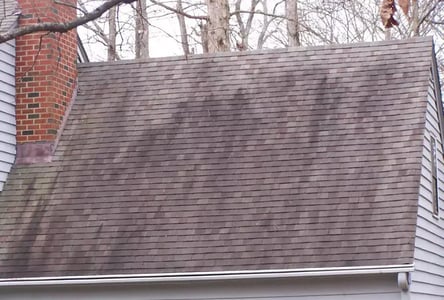
When you first look at the black streaks and marks on your roof, you may think that it’s some kind of dirt, or mold, but it’s actually a form of tiny cyanobacteria known as Gloeocapsa magma, or less fancily, blue-green algae. Even though it’s called “blue-green” the algae appears to us as black because of a dark coating that the spores form to protect against harsh, deadly sunlight.
Once you’ve started looking and paying attention, you’ll probably notice that several of your neighbor’s roofs, and those you drive by every day, have algae on them as well. It’s actually very common in most areas of the country. Thankfully, the algae isn’t very damaging to our roofs, or dangerous to us in this form. (Blue-green algae can be toxic in water environments, so don’t go swimming in it just because we said it was safe on your roof.) The main concern that algae causes for the health of your roof, is that they can reduce your shingle’s ability to protect against thermal energy and UV rays from the sun.
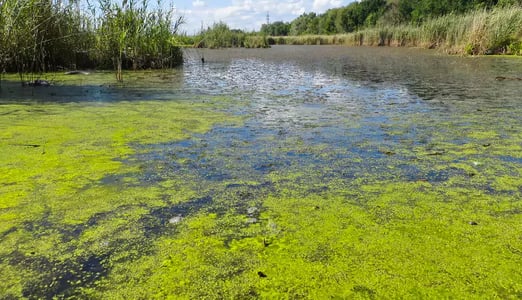
I used to think that algae was only that stuff that popped up in lakes and rivers, turning the water a sickly green. While that stuff is still blue-green algae, I was pretty surprised to find out that it also is what causes the black streaks on roofs.
Blue-green algae spores travel through the air, so that allows for the bacteria to find its way onto our roofs. As for how it lives up there? Most modern asphalt shingles are made with a few different materials, including a fiberglass mat, and a top layer made up of granules from different kinds of rocks. That granule layer often includes limestone, which contains the right nutrients for algae to grow and reproduce.
The algae prefers this kind of roof, especially areas in the shade, in warm, humid climates like the southeastern U.S. So once the algae lands on your roof, if the conditions are right, it will latch on and begin to grow and harden, creating those black streaks we know and hate.
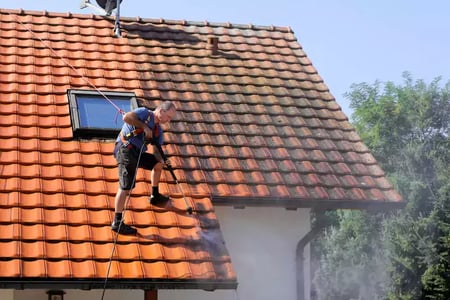
Though you definitely can clean your roof to get algae off, it’s not really something we’d usually recommend for an asphalt shingle roof. If you tried hard enough to scrub it, you could get it done, but not only would it be fairly dangerous for you, but you’d be scraping off loads of granules, which are your shingles first layer of protection from sunlight and rain.
There are companies that produce a formula that is supposed to be sprayed on your roof to kill the algae, which could be an economical solution to get rid of some of the current algae growth, if it all works properly. That being said, this isn’t something that we have ever used, so we can’t fully recommend any particular product, or verify how well it works.
Roofing material manufacturers have developed shingles with algae-fighting materials built into them to help combat the growth of blue-green algae. The way that this is done is by adding copper granules into the shingles that kill the algae spores and prevent it from growing.
CertainTeed’s Landmark Pro, and luxury shingle options carry their StreakFighter system, which carries a 10 or 15 year warranty, depending on the product. GAF uses their Time-Release Algae-Fighting Technology on their Timberline HDZ line, and those above it. With those shingles, GAF offers a 25-year warranty against algae growth, which will cover the shingles for most of their lifespan.
Apart from having those roofing systems, the best thing you can do to prevent algae growth is to ensure it doesn’t have a good environment to grow. This includes keeping your trees trimmed and away from your roof to ensure that there’s less shaded space for it to grow.
If you’re tired of seeing those black stains on your roof, reach out to a roofing contractor to have it inspected, and see what the best options are for your situation.
If you live in the Raleigh, North Carolina area, reach out to us using the “Contact Us” button below. On Tops Roofing has been replacing and repairing roofs in the Triangle for over 30 years, so whatever your roofing project requires, we’ll be happy to help!
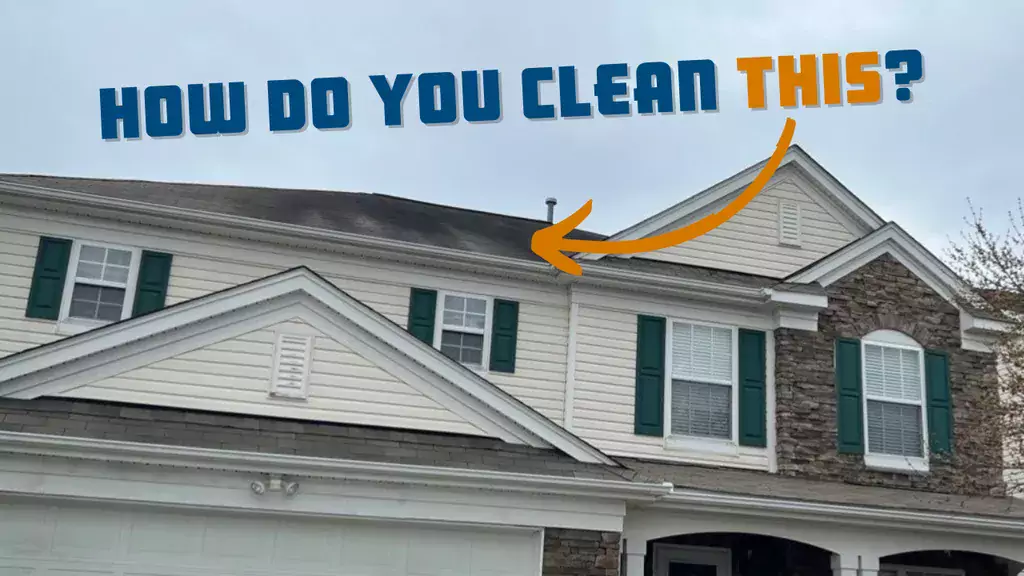
Next time you walk around your neighborhood, take a look up. Not to the sky, or the clouds, or maybe a bird or a plane passing overhead. Take a look...
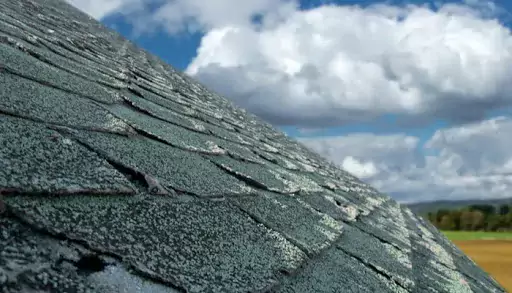
Unfortunately, “out of sight, out of mind” applies far too often when it comes to keeping tabs on the health of our roofs. We encounter other parts...
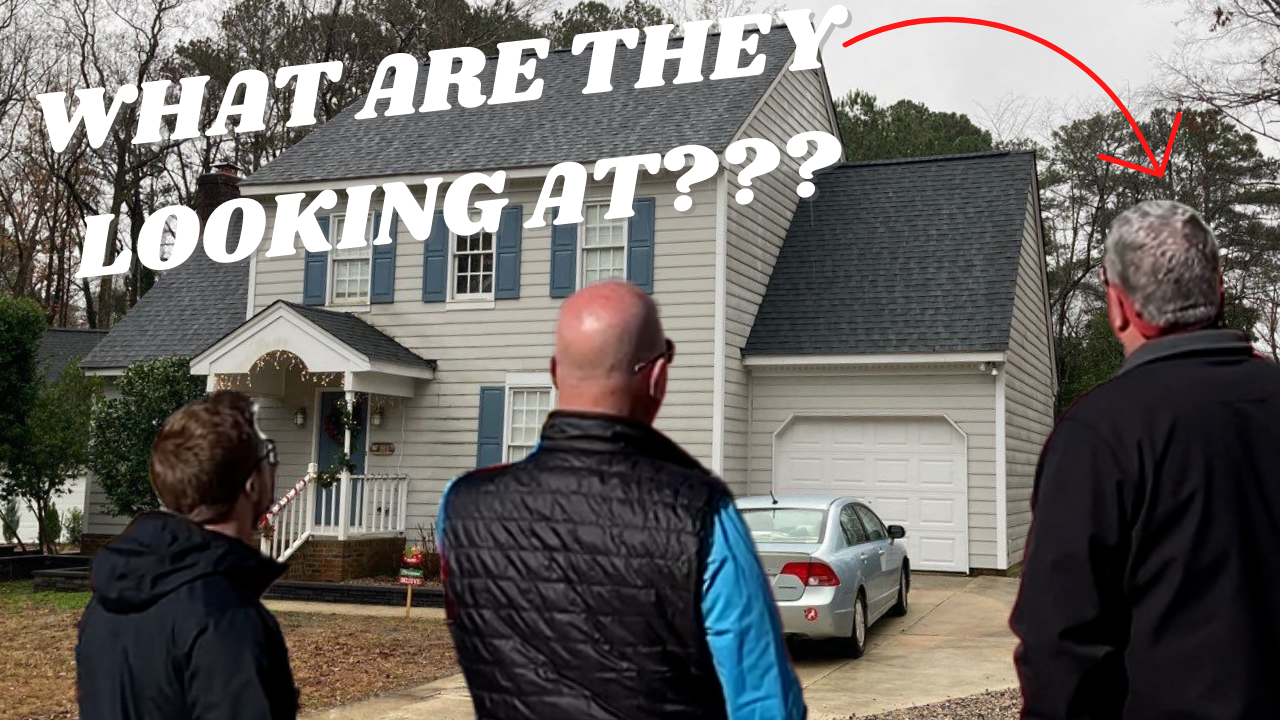
Starting off a roofing project can be difficult, and especially confusing for homeowners who haven’t gone through it before. What makes the process...